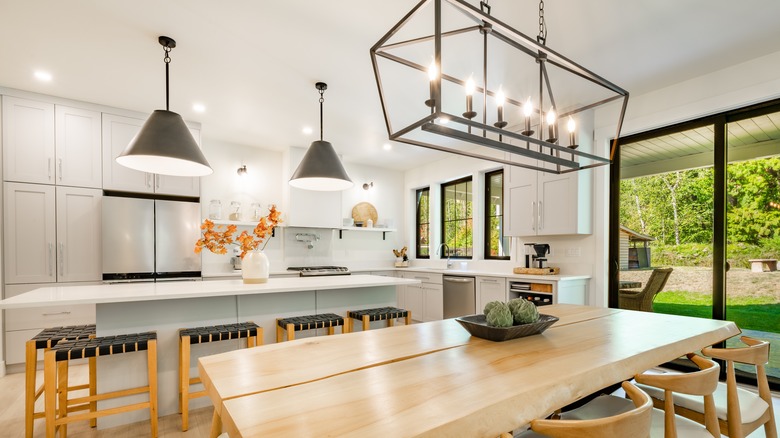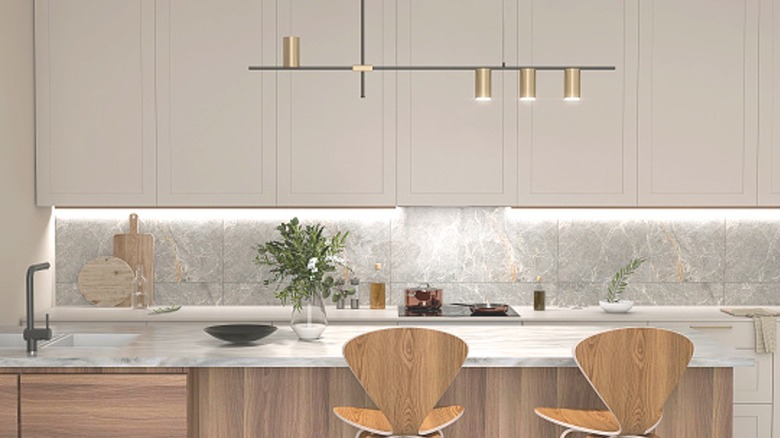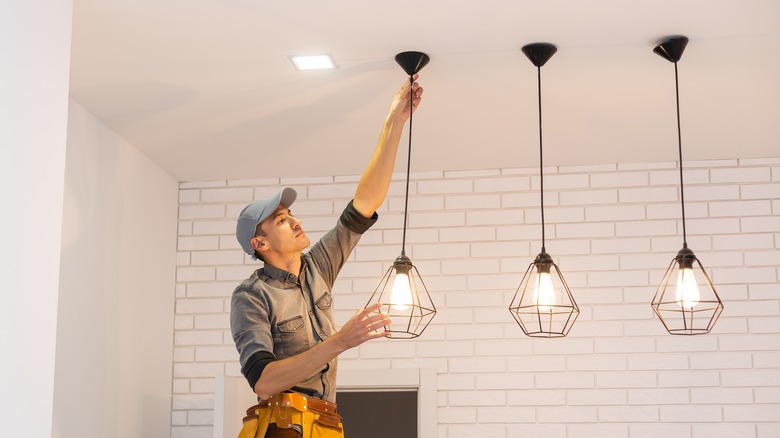Our Real Estate Expert Names The Kitchen Lighting Mistake You Might Be Guilty Of
Selecting the right options for your kitchen lighting can really make or break the visual appeal of the space. Improperly positioned lighting fixtures often lead to a dull and lifeless-looking kitchen. On the other hand, the proper lighting can maximize the functionality and charm of the space. With this in mind, it is important to know what to avoid when designing your kitchen lighting layout. Crystal Olenbush, real estate expert at Austin Real Estate and one of the top luxury realtors in Austin, Texas, revealed one of the worst kitchen lighting choices you should avoid. "The biggest lighting mistake I see clients making in their kitchens is relying solely on downlights for illumination," she shared while speaking exclusively to House Digest.
Try thinking beyond those overhead lights that illuminate the area directly below by looking into more customizable lighting for your meal preparation areas. "While downlights can provide general ambient lighting, they often create harsh shadows and glare in crucial work areas like countertops and sinks," Olenbush explained. "This not only makes it challenging to see and work safely in the kitchen but also detracts from the overall ambiance." So, what advice does Olenbush have on how to remedy this issue? "I recommend incorporating task and accent lighting alongside downlights," she said.
Consider lighting options other than downlights
There are so many functional and fabulous kitchen lighting options available that there is no need to limit yourself to only installing downlights. Real estate agent Crystal Olenbush detailed some of the other fixtures homeowners may want to consider. "Under-cabinet lighting is an excellent way to illuminate countertops and eliminate shadows, making food preparation and cooking much easier," she explained in an exclusive interview. "Pendant lights above islands or dining tables provide focused task lighting while adding a decorative touch. Wall sconces and other accent lighting can be used to highlight specific features, add depth, and create a warm, inviting atmosphere."
After you have made a decision on which lighting options will best enhance your kitchen, you might want to consider installing dimmers to help you customize illumination levels to best suit your needs. Olenbush explained that this feature comes in handy for those times when you need to adjust your lighting according to your needs. If you are preparing a meal, for example, you can maximize the illumination to brighten up your kitchen. When it's time to eat dinner, you might choose to dim the lighting to give the kitchen a warm and cozy feel.
Other kitchen lighting tips
Besides selecting options other than just downlights, there are quite a few additional ways you can enhance your kitchen lighting. For example, color temperature is a very important factor. Warmer lighting can make a space feel vastly different than cool-toned lights and vice versa. "Opt for warm white bulbs in the 2700-3000K range to create a cozy, inviting glow that complements your kitchen's design," real estate agent Crystal Olenbush exclusively recommended to House Digest.
Along with opting for the right color temperature, you may also want to consider relying on professionals to have your lighting installed properly. Wiring errors are costly to repair at best, and a fire hazard at worst. Professional installation will help you avoid these problems. "To ensure the best possible lighting design, I always recommend working with experienced kitchen designers or electricians," Olenbush shared. "They can help homeowners avoid common mistakes and create a well-balanced lighting plan that incorporates ambient, task, and accent lighting in a way that enhances both the look and feel of the kitchen."


